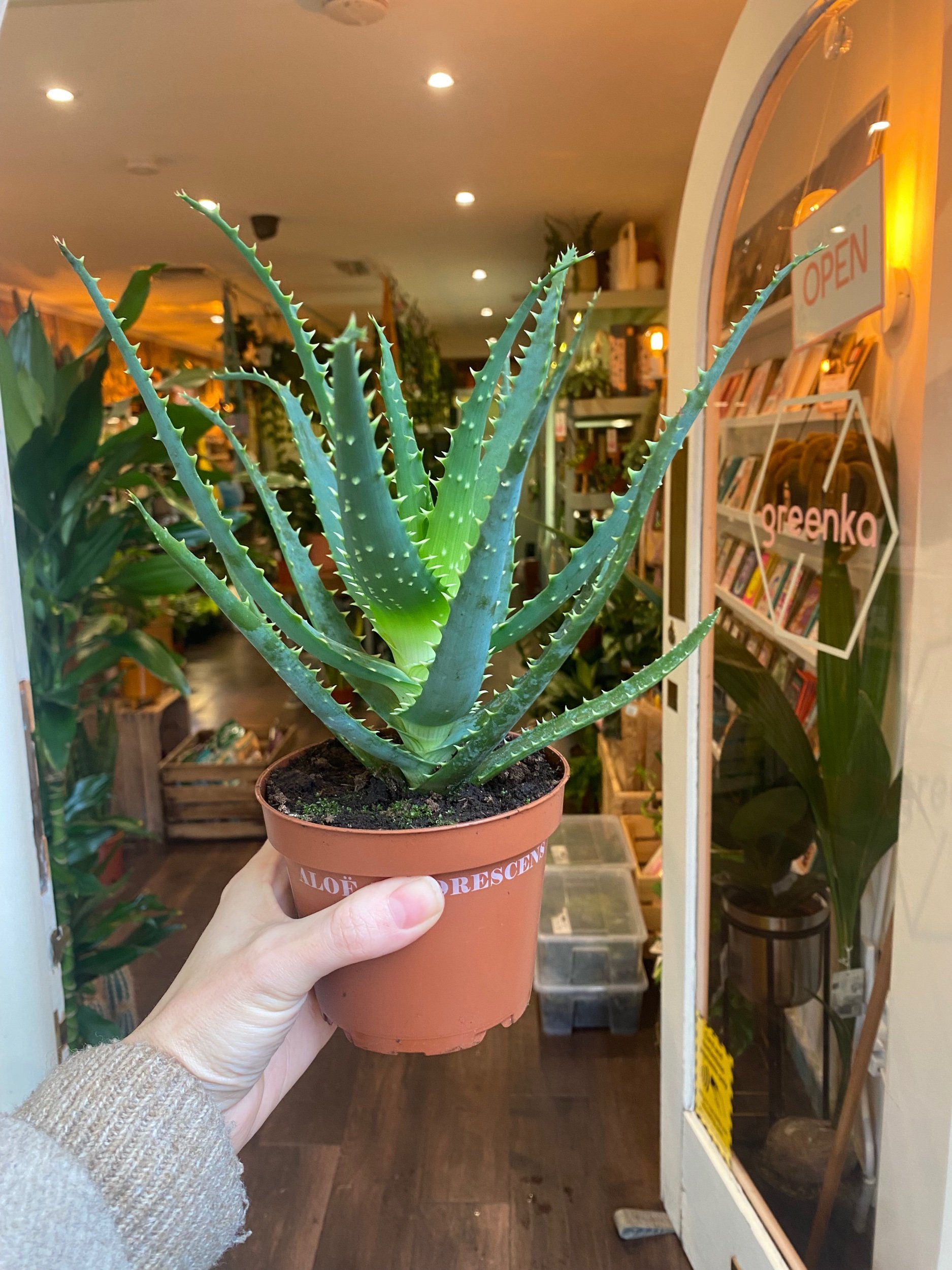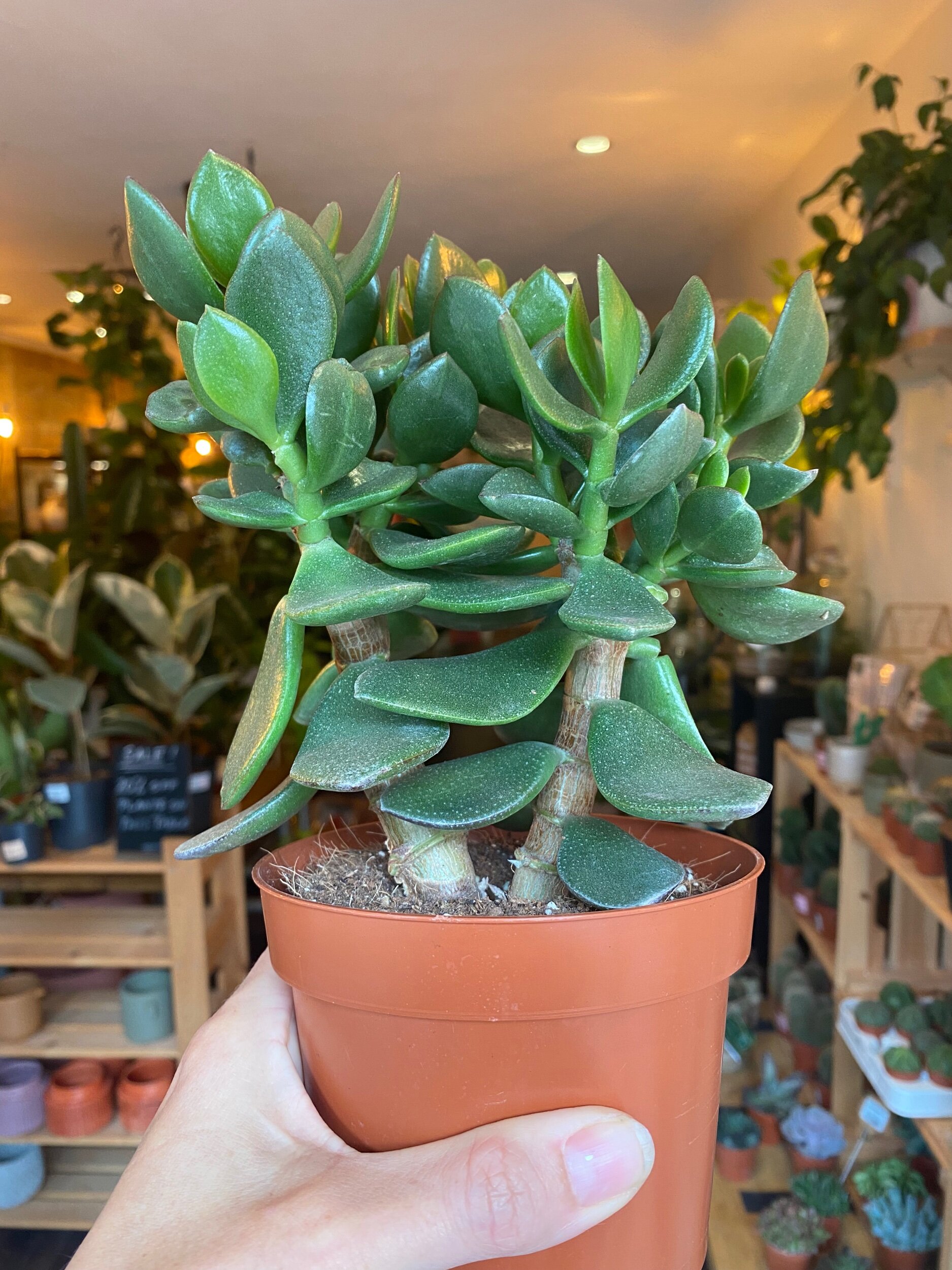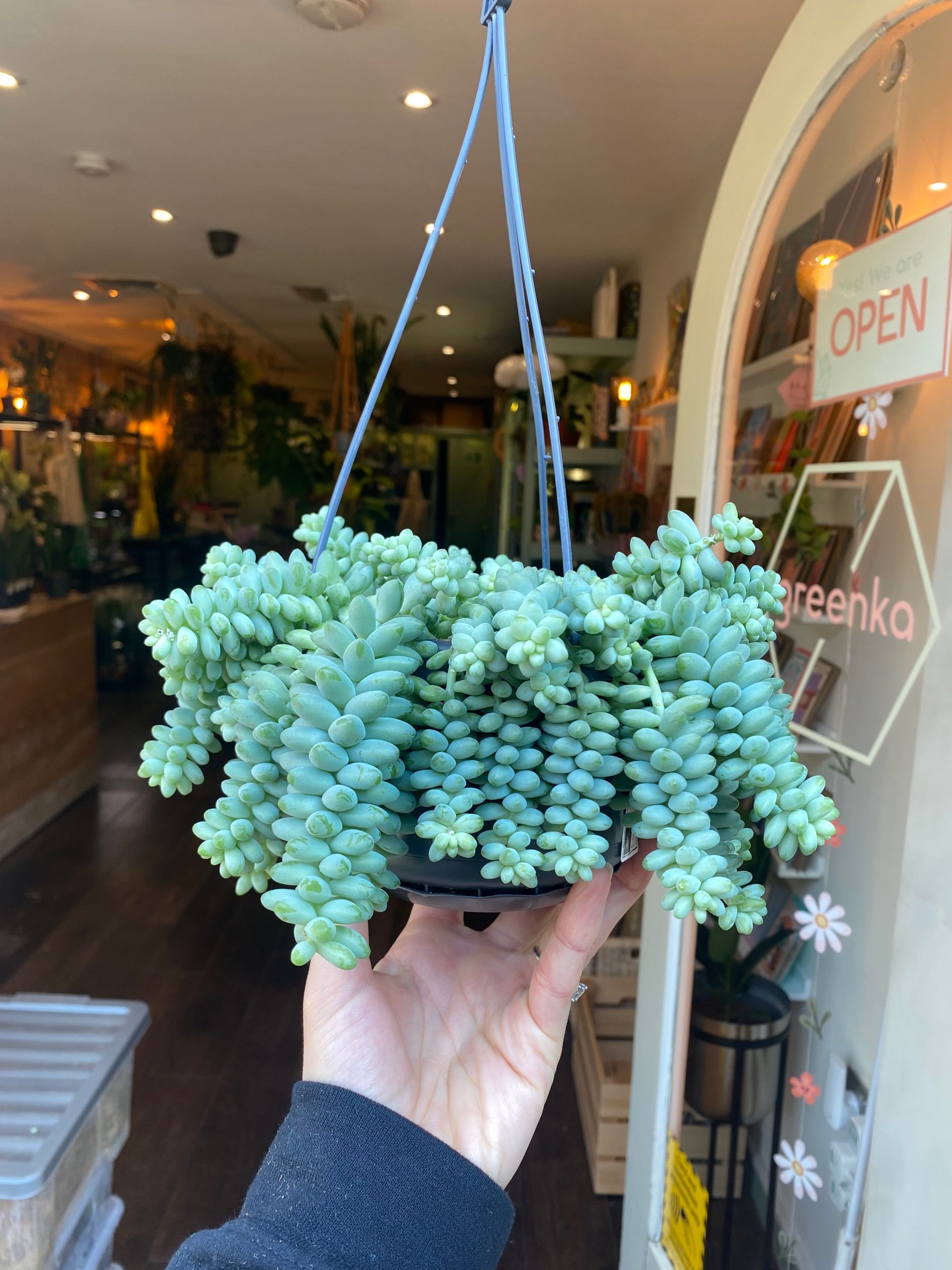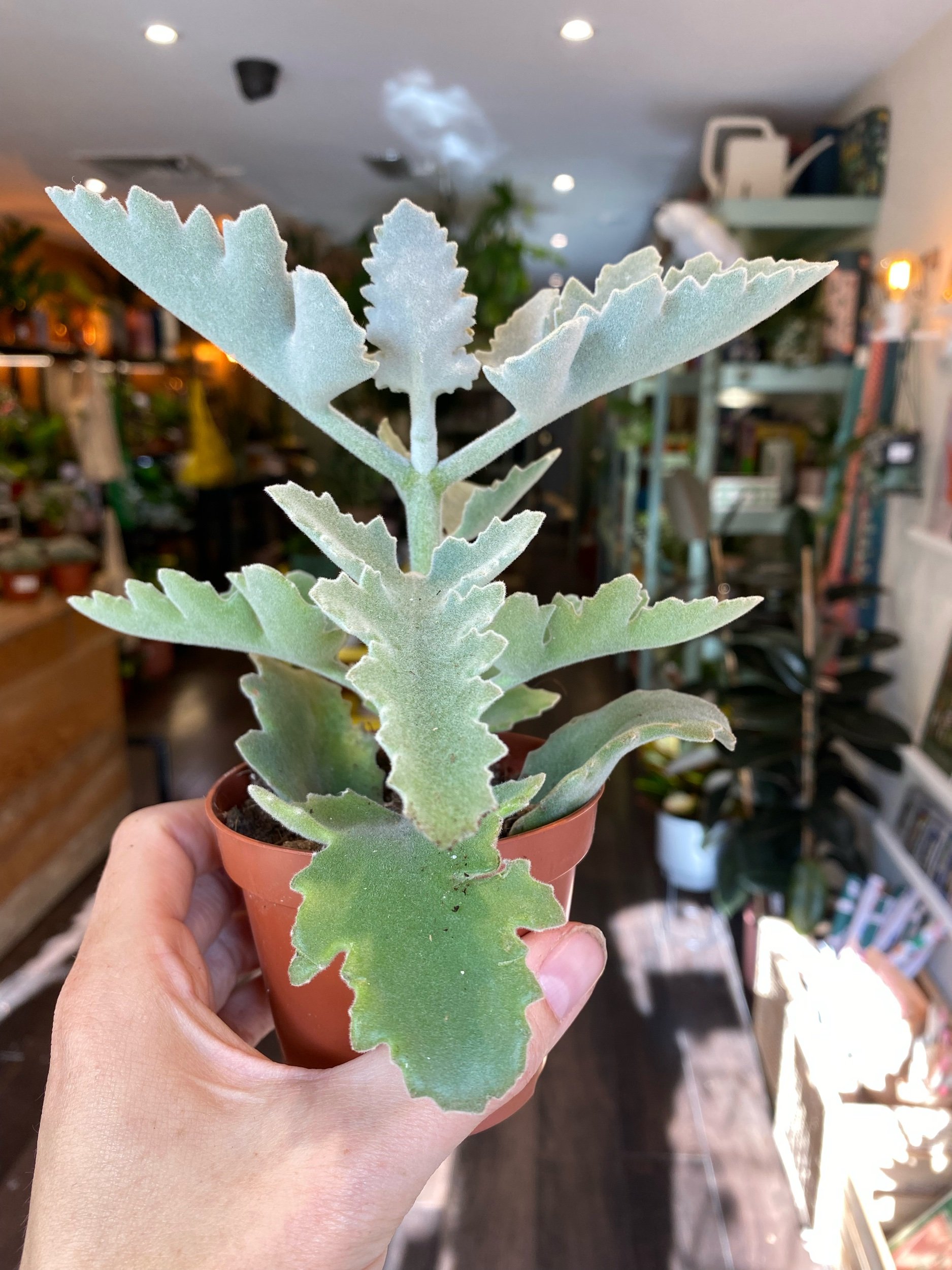Succulents
☀️- Prefers bright, indirect light to full sun. Most succulents thrive with at least 4-6 hours of sunlight daily. Avoid intense, direct afternoon sun if the plant is not acclimated, as it can scorch the leaves.
💧- Water sparingly, allowing the soil to dry out completely between waterings. In spring and summer, water moderately, but reduce watering significantly in autumn and winter when growth slows.
🌡️- Thrives in temperatures between 18°C to 26°C. Protect from frost and avoid exposure to temperatures below 10°C.
🪴- Repot every 2-3 years in spring using a well-draining succulent or cactus mix. Ensure the pot has drainage holes to prevent waterlogging.
🐾- Non-toxic to pets in most cases, but some species may be mildly toxic; verify for the specific type of succulent.
Succulents are a diverse group of plants celebrated for their ability to store water in their thick, fleshy leaves, stems, or roots. Originating from arid regions around the world, they come in a wide array of shapes, sizes, and colors, making them a favorite among plant enthusiasts and decorators alike. From the classic rosettes of Echeveria to the quirky trailing vines of String of Pearls (Senecio Rowleyanus), succulents are as versatile as they are beautiful. Some varieties even produce vibrant flowers when properly cared for, adding a pop of color to their striking forms.
While succulents are famously low-maintenance, they do have specific requirements to thrive indoors. Their natural habitats are sunny and dry, so replicating these conditions is key. With the right balance of light, water, and soil, succulents make excellent companions for both beginners and experienced plant parents, as well as those with a busy lifestyle.
Care
Succulents thrive in bright, indirect light and need at least 4-6 hours of sunlight daily. A sunny windowsill, particularly one that faces south or east, is ideal. If light levels are too low, the plant may stretch and become leggy—a process known as etiolation. For those with limited natural light, a grow light can help keep succulents happy and healthy.
Watering is perhaps the most crucial aspect of succulent care. Overwatering is the primary cause of succulent problems, so always let the soil dry out completely between waterings. During the growing season (spring and summer), water thoroughly but infrequently, usually once every 2-3 weeks. In the dormant months (autumn and winter), reduce watering to once a month or less, depending on your home’s humidity and temperature.
Succulents require well-draining soil to prevent root rot. A specially formulated cactus and succulent mix is ideal, or you can create your own by mixing regular potting soil with sand or perlite. When potting, choose containers with drainage holes to allow excess water to escape.
Fertilizer is optional but can encourage growth and flowering. Use a diluted, balanced liquid fertilizer during the active growing season, applying once a month. Avoid fertilizing in the winter when the plant is dormant.
Problems
Wrinkled leaves – Underwatered; give the plant a good soak.
Mushy or yellowing leaves – Overwatered; check the roots and let the soil dry out.
Leggy growth – Not enough light; move to a brighter spot or supplement with a grow light.
Pests (mealybugs or aphids) – Treat with neem oil or insecticidal soap.














